Key Takeaways
1. Embrace the Apprenticeship Mindset: Continuous Learning and Growth
For every step you take toward mastery, your destination moves two steps further away. Embrace mastery as a lifelong endeavor. Learn to love the journey.
Lifelong learning. The software development field is vast and constantly evolving. Adopting an apprenticeship mindset means committing to continuous learning and improvement throughout your career. This approach acknowledges that there is always more to learn and that expertise is built over time through deliberate practice and experience.
Growth mindset. Embrace challenges as opportunities for growth rather than threats to your competence. Cultivate curiosity and a willingness to experiment with new technologies, methodologies, and ideas. Recognize that mistakes and failures are valuable learning experiences that contribute to your overall development as a craftsman.
2. Find Mentors and Kindred Spirits to Accelerate Your Journey
Seek out those who have gone ahead of you and strive to learn from them.
Mentorship. Actively seek out experienced developers who can guide you, provide feedback, and share their hard-won wisdom. Mentors can help you navigate challenges, avoid common pitfalls, and accelerate your learning process. Be proactive in building these relationships and show appreciation for the time and knowledge shared.
Community. Surround yourself with like-minded individuals who share your passion for software craftsmanship. Join user groups, attend conferences, and participate in online communities. These connections provide:
- Opportunities for collaboration
- Exposure to diverse perspectives and experiences
- A support network for sharing challenges and successes
- Motivation to continue growing and improving
3. Develop Concrete Skills While Maintaining a Broad Perspective
Acquire and maintain concrete skills. Even though one of the things that an apprentice brings to a team is an ability to learn quickly, the possession of discrete and demonstrable ability with specific tools and technologies increases the likelihood that you will be trusted to contribute indirectly until you start to gain stature.
Skill acquisition. Focus on developing a solid foundation of practical, in-demand skills. This includes:
- Proficiency in one or more programming languages
- Familiarity with common tools and frameworks
- Understanding of software design principles and patterns
- Experience with version control systems and collaborative development practices
Breadth of knowledge. While honing specific skills, maintain awareness of the broader software development landscape. Explore different paradigms, languages, and methodologies to gain a well-rounded perspective and adaptability.
4. Confront and Expose Your Ignorance to Foster Rapid Improvement
Show the people who are depending on you that the learning process is part of delivering software. Let them see you grow.
Honesty and vulnerability. Acknowledge and openly discuss areas where your knowledge is lacking. This transparency builds trust with colleagues and clients while creating opportunities for focused learning and improvement. Resist the urge to pretend you know everything.
Active learning. When confronted with gaps in your knowledge:
- Ask questions and seek clarification
- Research and study independently
- Practice new concepts through small projects or exercises
- Seek feedback on your understanding and implementation
5. Create Feedback Loops and Learn from Failure
Create mechanisms for regularly gathering more or less objective external data about your performance. By soliciting feedback early, often, and effectively, you increase the probability that you will at least be conscious of your incompetence.
Feedback mechanisms. Implement various methods to assess your progress and performance:
- Regular code reviews
- Pair programming sessions
- Automated testing and continuous integration
- Soliciting input from mentors and peers
- Self-reflection and journaling
Embracing failure. View failures and mistakes as valuable learning opportunities. Analyze what went wrong, identify lessons learned, and apply those insights to future work. Develop resilience and the ability to bounce back from setbacks stronger and more knowledgeable.
6. Stay in the Trenches: Prioritize Hands-On Experience Over Management
To remain on that path, work with your employer to find other mechanisms for rewarding you. These may include more pay or nontraditional technical leadership roles such as internal consultancy. If your organization is inflexible, then it is better to seek opportunities elsewhere (see Draw Your Own Map) than to permit yourself to be promoted away from the craft.
Hands-on experience. Prioritize roles that allow you to continue writing code and solving technical problems. Resist the pressure to move into management positions prematurely, as this can hinder your growth as a craftsman.
Alternative career paths. Explore non-traditional advancement opportunities that allow you to grow professionally while staying technically focused:
- Technical lead or architect roles
- Specialization in specific domains or technologies
- Internal consultancy or mentorship positions
- Contributing to open-source projects or writing technical content
7. Construct Your Own Curriculum: Read Widely and Deeply
Focus your thirst for learning on consuming as much of the written word as possible. Emphasize books over blogs as you construct your Reading List.
Curated reading list. Develop and maintain a list of books, articles, and resources covering various aspects of software development. Include:
- Classic texts that have stood the test of time
- Current publications on emerging technologies and methodologies
- Works on related fields (e.g., computer science, design, project management)
Deep reading. Engage with material deeply, taking notes and reflecting on how concepts apply to your work. Seek out primary sources and foundational texts to build a strong theoretical understanding alongside practical skills.
8. Balance Familiar Tools with Exploration of New Technologies
Identify and focus on a set of familiar tools. Ideally, these are the tools where you no longer need the documentation—you either know all the best practices, gotchas, and FAQs by heart, or you have written them down on your blog, wiki, or wherever you have chosen to Record What You Learn.
Core toolset. Develop deep expertise in a core set of tools and technologies that you use regularly. This proficiency allows you to work efficiently and provide reliable estimates for common tasks.
Continuous exploration. While maintaining your core skillset, allocate time to explore new tools and technologies. This helps you:
- Stay current with industry trends
- Evaluate potential improvements to your workflow
- Expand your problem-solving capabilities
- Avoid becoming overly reliant on outdated technologies
9. Share What You Learn to Solidify Knowledge and Build Community
Early in your apprenticeship, develop the habit of regularly sharing the lessons you have learned. This may take the form of maintaining a blog or running "brown bag" sessions amongst your Kindred Spirits.
Knowledge sharing. Regularly share your learnings and experiences through various channels:
- Writing blog posts or articles
- Giving presentations or workshops
- Contributing to open-source projects
- Mentoring junior developers
- Participating in online forums and discussions
Teaching benefits. Sharing knowledge not only helps others but also reinforces your own understanding. It forces you to organize your thoughts, identify gaps in your knowledge, and often leads to new insights and deeper comprehension.
10. Reflect on Your Work and Record Your Learning Journey
Keep a record of your journey in a journal, personal wiki, or blog. A chronological record of the lessons you have learned can provide inspiration to those you mentor, since it makes your journey explicit, but it can also give you a vital resource to draw upon.
Reflective practice. Regularly set aside time to reflect on your work, challenges, and learning experiences. Consider:
- What went well and why
- Areas for improvement
- New insights or techniques discovered
- How to apply lessons learned to future work
Documentation. Maintain a personal knowledge base to record your learning journey. This can include:
- Technical notes and code snippets
- Project postmortems and lessons learned
- Summaries of books, articles, and conferences attended
- Personal goals and progress tracking
11. Pursue Mastery Through Deliberate Practice and Deep Understanding
Seek to identify the ways in which you tend to fail and try to resolve those that are worth fixing.
Deliberate practice. Engage in focused, challenging practice to improve specific skills. This involves:
- Setting clear goals for improvement
- Breaking down complex skills into manageable components
- Seeking immediate feedback and adjusting your approach
- Pushing yourself beyond your comfort zone
Deep understanding. Strive to understand the underlying principles and concepts behind the technologies you use. This includes:
- Studying computer science fundamentals
- Exploring the history and evolution of software development practices
- Examining the trade-offs and design decisions in different approaches
- Questioning assumptions and seeking to understand why things work the way they do
By pursuing mastery through deliberate practice and deep understanding, you develop the ability to adapt to new challenges, innovate solutions, and contribute meaningfully to the advancement of the software development craft.
Last updated:
FAQ
What's "Apprenticeship Patterns: Guidance for the Aspiring Software Craftsman" about?
- Focus on Software Craftsmanship: The book provides guidance for aspiring software developers who wish to master their craft through a series of patterns that address common challenges faced by apprentices.
- Pattern-Based Approach: It introduces a pattern language that helps developers navigate their career paths, focusing on personal growth, learning, and skill development.
- Mentorship and Community: Emphasizes the importance of finding mentors and engaging with a community of like-minded individuals to foster learning and growth.
- Long-Term Career Development: Encourages readers to view their career as a long journey, focusing on sustainable motivations and continuous improvement.
Why should I read "Apprenticeship Patterns"?
- Practical Guidance: Offers actionable advice for software developers at the beginning of their careers, helping them navigate common challenges.
- Career Growth: Provides insights into how to develop a fulfilling and sustainable career in software development.
- Community and Mentorship: Highlights the importance of community and mentorship in personal and professional growth.
- Focus on Learning: Encourages a mindset of perpetual learning and self-improvement, which is crucial in the ever-evolving field of software development.
What are the key takeaways of "Apprenticeship Patterns"?
- Embrace Lifelong Learning: The book emphasizes the importance of continuous learning and self-improvement throughout one's career.
- Find and Learn from Mentors: It stresses the value of finding mentors and learning from their experiences and guidance.
- Develop Concrete Skills: Encourages the acquisition of specific, demonstrable skills that can be immediately applied in a professional setting.
- Balance Art and Craft: Advises developers to focus on delivering value to customers while maintaining high standards of quality and craftsmanship.
What is the "Be the Worst" pattern in "Apprenticeship Patterns"?
- Surround Yourself with Experts: Encourages developers to join teams where they are the least experienced, allowing them to learn from more skilled colleagues.
- Rapid Learning Environment: Being the least experienced member pushes you to learn quickly and improve your skills.
- Avoid Complacency: Prevents stagnation by constantly challenging you to catch up with your peers.
- Contribute Meaningfully: While learning, also find ways to contribute to the team, such as taking on less glamorous but necessary tasks.
How does "Apprenticeship Patterns" define a software craftsman?
- Lifelong Learner: A software craftsman is someone who views mastery as a lifelong journey and is committed to continuous learning.
- Focus on Quality: They prioritize delivering high-quality, well-crafted software that meets the needs of their customers.
- Community-Oriented: Engages with a community of practice, sharing knowledge and learning from others.
- Mentorship Role: As they progress, they take on the responsibility of mentoring others and passing on their knowledge.
What is the "Breakable Toys" pattern in "Apprenticeship Patterns"?
- Safe Learning Environment: Encourages developers to create personal projects where they can experiment and learn without fear of failure.
- Build Relevant Tools: Suggests building tools that are useful in your daily life, such as a personal wiki or a simple game.
- Learn from Failure: Provides a space to make mistakes and learn from them, which is crucial for growth.
- Overcome Limitations: Helps you understand the limitations of your current knowledge and pushes you to explore new areas.
What are the best quotes from "Apprenticeship Patterns" and what do they mean?
- "He who knows not and knows not that he knows not, is a fool — shun him!": This quote emphasizes the importance of self-awareness and the dangers of ignorance.
- "Craftsmen take on only eager apprentices who are willing to learn the craft of software development.": Highlights the value of enthusiasm and willingness to learn in an apprentice.
- "If you come to me with a cup that is already full, how can you expect me to give you something to drink?": Stresses the need for an open mind and the willingness to learn new things.
- "The best way to prepare [to be a programmer] is to write programs, and to study great programs that other people have written.": Encourages learning through practice and studying the work of others.
How does "Apprenticeship Patterns" suggest dealing with failure?
- Embrace Failure as Learning: The book suggests viewing failure as an opportunity to learn and grow, rather than something to be feared.
- Create Safe Spaces: Use the "Breakable Toys" pattern to create environments where you can fail safely and learn from your mistakes.
- Reflect on Failures: Regularly reflect on your failures to understand what went wrong and how you can improve.
- Learn How You Fail: Identify patterns in your failures to address and overcome them effectively.
What is the "Find Mentors" pattern in "Apprenticeship Patterns"?
- Seek Guidance: Encourages finding experienced developers who can provide guidance and support throughout your career.
- Learn from Experience: Mentors can offer insights and advice based on their own experiences, helping you avoid common pitfalls.
- Build Relationships: Developing a relationship with a mentor can provide long-term benefits and support.
- Diverse Mentorship: Suggests having multiple mentors to gain a variety of perspectives and knowledge.
How does "Apprenticeship Patterns" recommend constructing a curriculum?
- Reading List: Maintain a list of books to read, prioritizing those that will provide the most value to your learning journey.
- Study the Classics: Focus on reading classic texts that have stood the test of time and offer deep insights into software development.
- Balance Theory and Practice: Combine theoretical knowledge with practical experience to develop a well-rounded skill set.
- Continuous Update: Regularly update your curriculum to reflect new interests and areas of growth.
What is the "Craft over Art" pattern in "Apprenticeship Patterns"?
- Focus on Utility: Prioritizes delivering useful software that meets customer needs over creating something purely for artistic expression.
- Balance Quality and Functionality: Encourages maintaining high standards of quality while ensuring the software is functional and valuable.
- Customer-Centric Approach: Emphasizes the importance of understanding and addressing customer requirements.
- Avoid Perfectionism: Warns against getting caught up in making something perfect at the expense of delivering value.
How does "Apprenticeship Patterns" address the concept of sustainable motivations?
- Align with Long-Term Goals: Encourages aligning your motivations with long-term career goals to maintain focus and drive.
- Intrinsic Motivation: Suggests finding intrinsic motivations, such as a love for programming, to sustain you through challenges.
- Avoid Burnout: Warns against overworking and emphasizes the importance of maintaining a healthy work-life balance.
- Adapt to Change: Recognizes that motivations may change over time and encourages adapting to new circumstances and goals.
Review Summary
Apprenticeship Patterns is highly praised for its practical advice on software development careers. Readers appreciate its focus on continuous learning, humility, and growth mindset. Many wish they had discovered it earlier in their careers. The book's pattern-based approach is generally well-received, though some find it obvious or idealistic. It's considered especially valuable for early-career developers and students. Critics note it lacks work-life balance discussion and may reinforce hierarchical attitudes. Overall, it's widely recommended as an inspiring guide for aspiring software craftsmen.
Similar Books
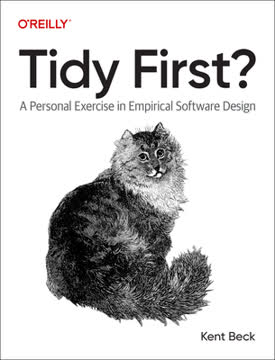

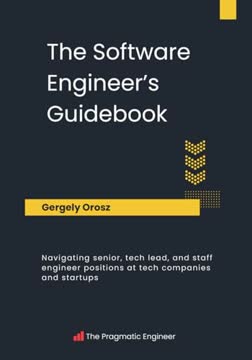

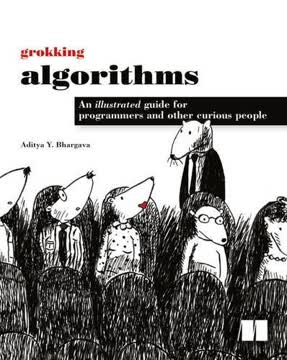

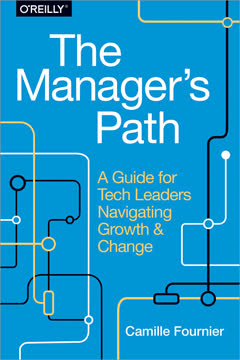
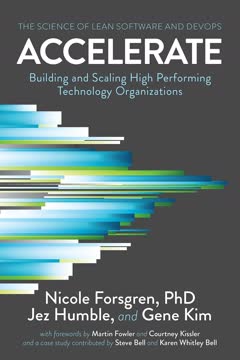

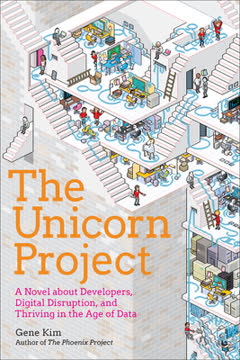
Download PDF
Download EPUB
.epub digital book format is ideal for reading ebooks on phones, tablets, and e-readers.




